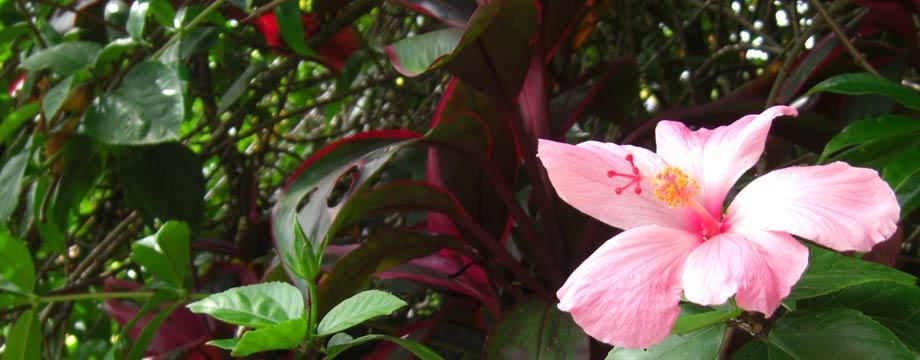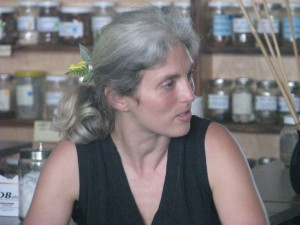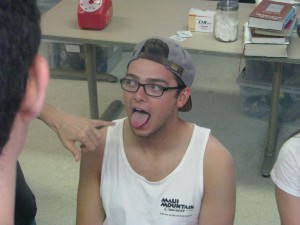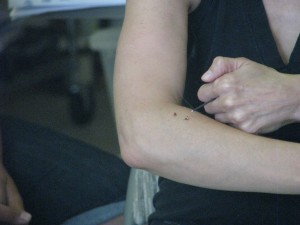On Sunday, May 25th we walked back to the Hawaii College of Oriental Medicine (HICOM) for a lecture on acupuncture from Ruthie Moss, LAc (Dean of Academics). The students learned about the history and evolution of the practice of acupuncture and oriental medicine, and a bit about the curriculum and training offered to students at HICOM.
Ruthie Moss discussed how the pulse, and tongue are used for determining diagnosis in traditional Chinese medicine, and several students volunteered to have their tongues used a “examples” so that Ruthie could demonstrate how to identify differences in tongue qualities such as “puffy” (with scallops) and “not-puffy” (without scallops), color/quality of the tongue coat (pale or yellow, and thick or thin) and color of the tongue (purple, red, or pale)
She shared quite a bit of information about various herbs, and how they are used in oriental medicine, and provided the students with a demonstration of how moxibustion is performed.
Moxibustion: A traditional Chinese medicine therapy using “moxa” made from dried mugwort (Artimisia argyi). It plays an important role in the traditional medical systems of China, Tibet, Japan, Korea, Vietnam & Mongolia. Suppliers usually age the mugwort and grind it up to a fluff; practitioners burn the fluff or process it further into a cigar-shaped stick. It can be used indirectly, with acupuncture needles, or burned directly on a patient’s skin. Moxibustion is used to warm regions and acupuncture points with the intention of stimulating circulation through the points and inducing a smoother flow of blood and qi.
During the last part of the session at HICOM, the students were given the opportunity to receive acupuncture ear therapy using the NADA protocol which as it exists today consists of the insertion of small, stainless-steel, disposable acupuncture needles into five points on the outer surface of a person’s ear. The points used in the NADA protocol are Sympathetic, Shen Men, Kidney, Liver, and Lung. People often state that they feel “energized,” “lighter” and “more relaxed” after undergoing a session using this protocol.







